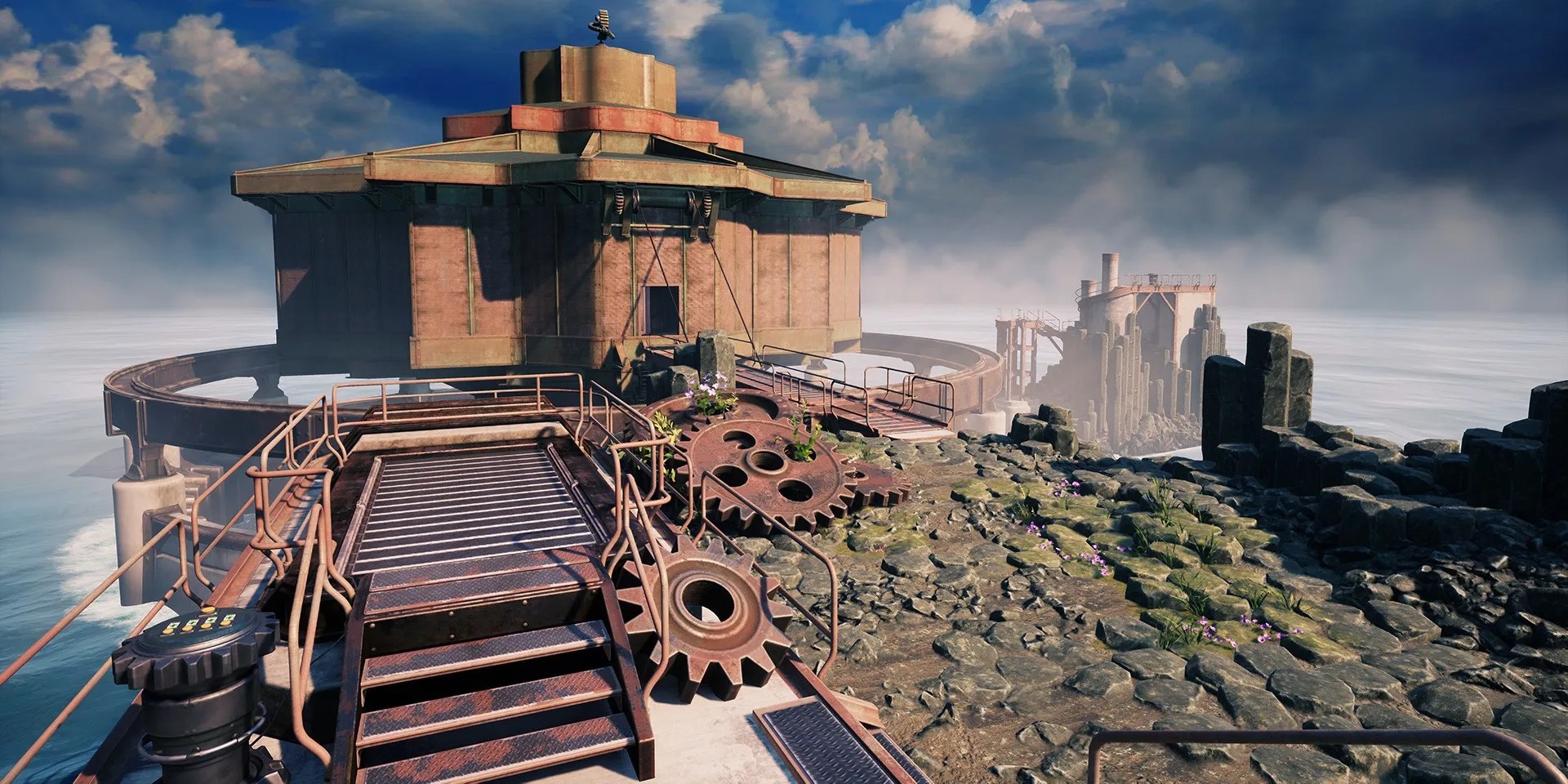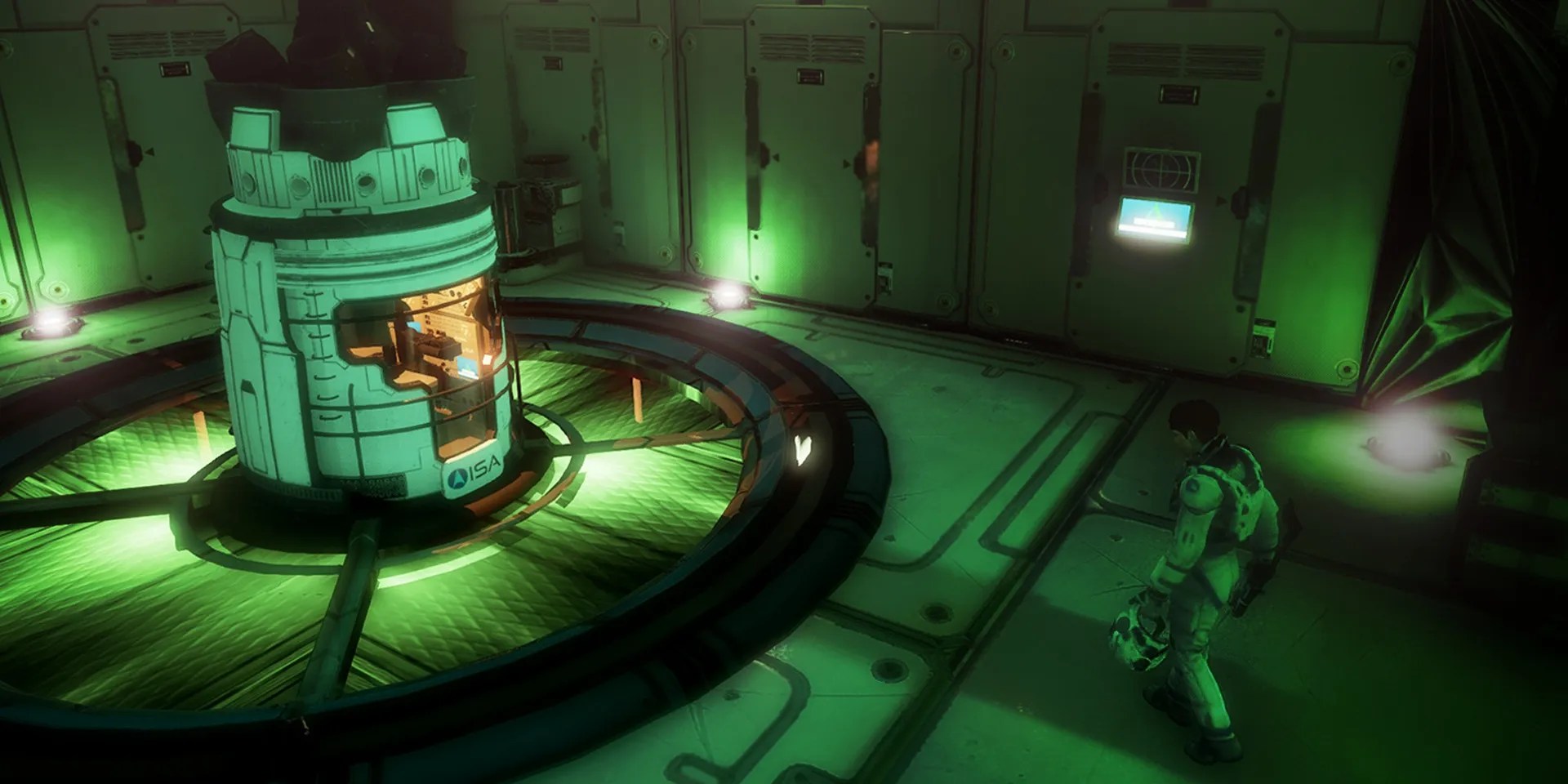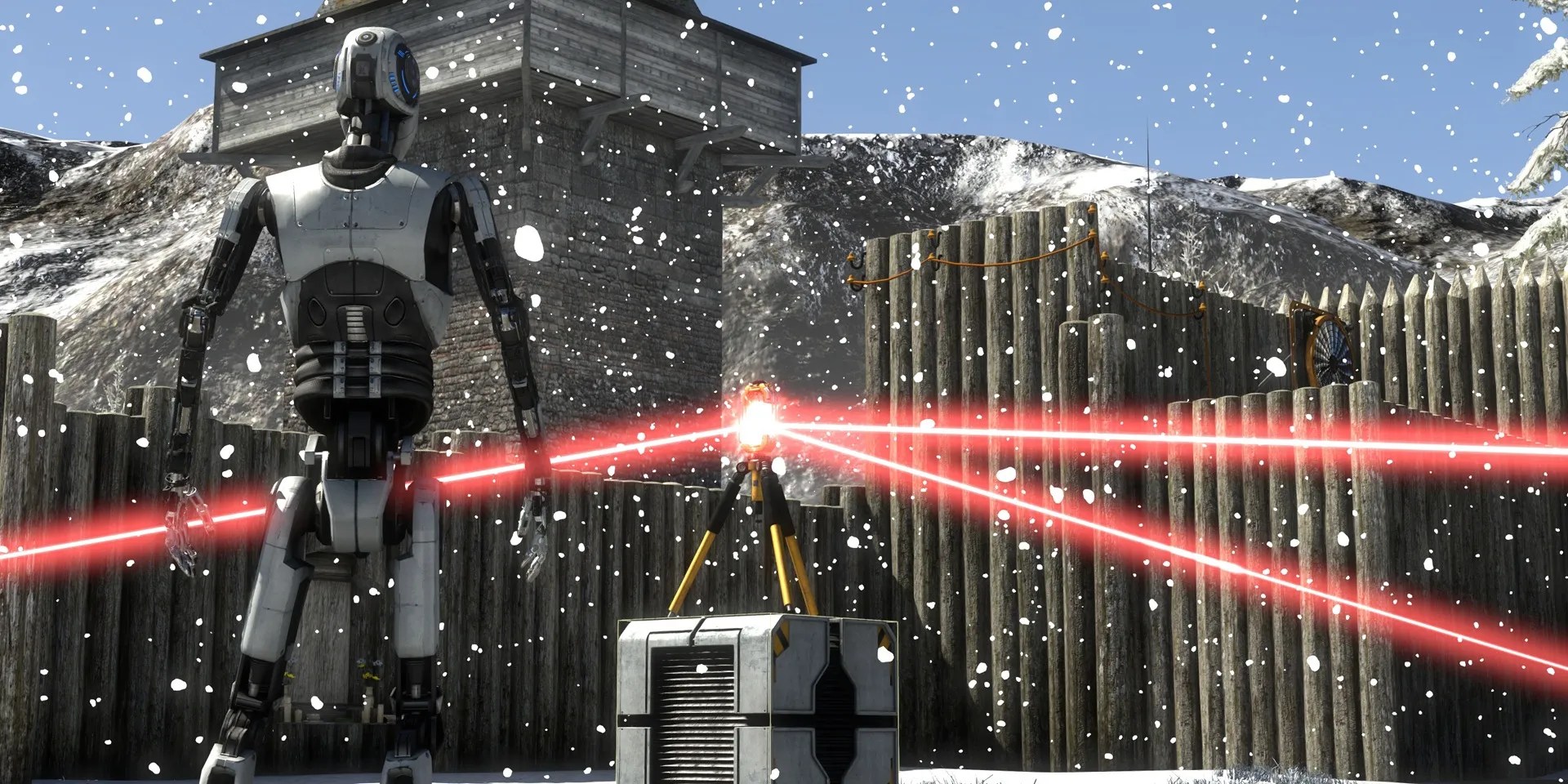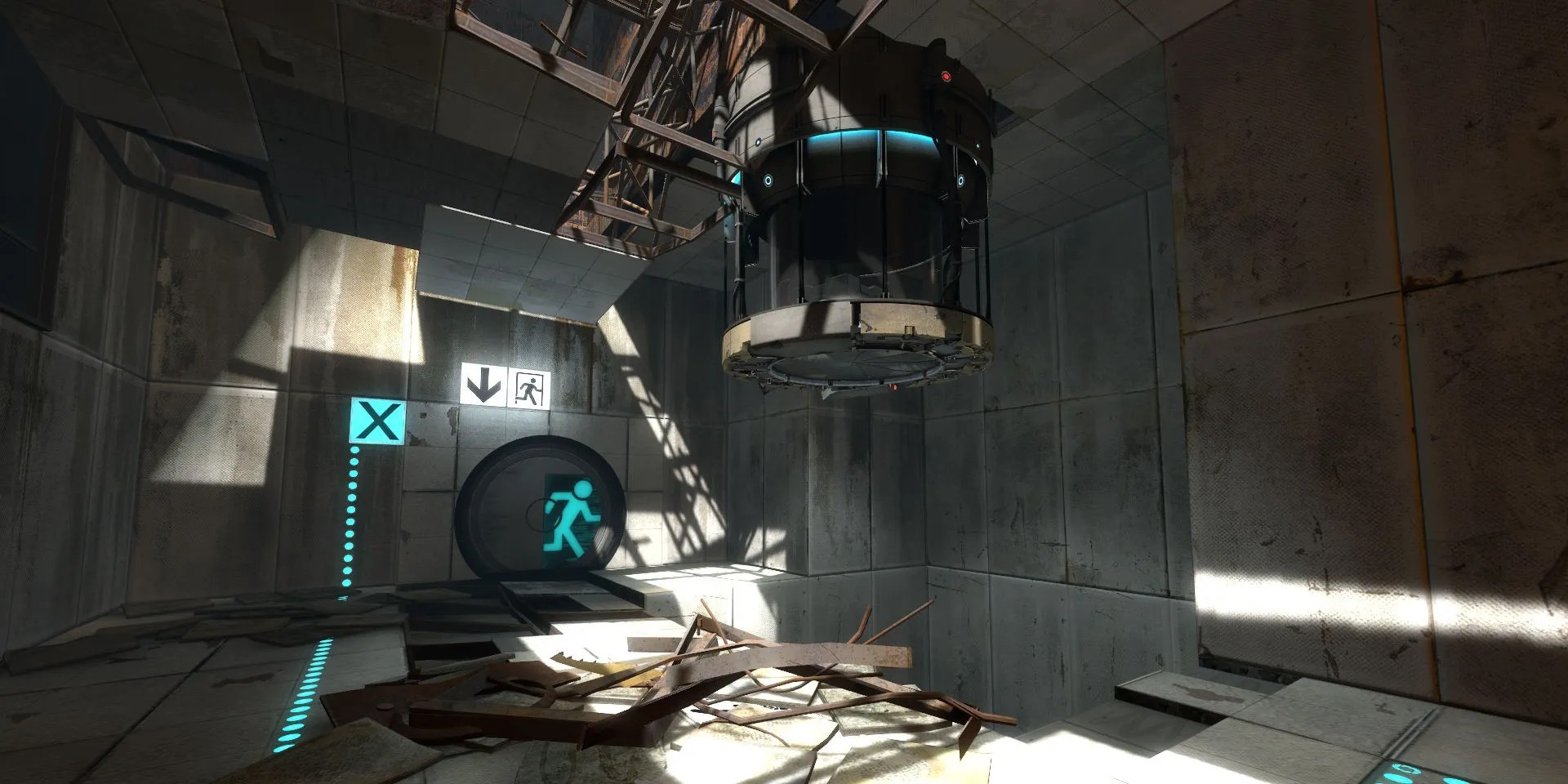Many puzzle video games used to be either point-and-click adventures or tile-based score attack games. But the genre has evolved heavily over the years, including with first-person puzzle games that are controlled like first-person shooters without combat.
RELATED:Best Puzzle Platformers
First-person puzzle games have been around for years, but their popularity did not skyrocket until the 2010s with massive releases that fall underneath the category. And while many have implemented unique gimmicks and twists on the format, only a few stand out among the all-time best first-person puzzle games.
10Myst
One of thenotable early first-person puzzlegames wasMystfrom 1993. But unlike many first-person games nowadays, this was more of a slide show that had players clicking to advance forward and interact with the various objects in the world. That said, its remake in 2020 plays more like a modern first-person puzzle game.
The person the player controls inMystis an individual who has been transported into a book onto the island of Myst. As they explore the island, players will discover puzzles that will allow them to explore completely different worlds and learn more about the characters they meet along the way.

9The Entropy Centre
Manipulating time sounds like an incredible superpower, but it is actually the main mechanic of the devices used inThe Entropy Centre. Puzzles presented in the game usually involve moving items around and then using Astra, an AI device that canretrace an object’s pathand move them back to a specific location.
Players take on the role of Aria who wakes up in the facility with no memories of who she was before it. She meets Astra in a lab room, which she then uses to get around the facility. They then learn that she needs to figure out how to use the facility’s power to stop the Earth from exploding.

8Manifold Garden
A crucial element of a first-person puzzle game is the ability to build a captivating world.Manifold Gardenhas a world that is fun to explore since it goes on in every direction infinitely. This ties into how to solve each of the puzzles that players stumble across along the way.
RELATED:Puzzle Games That Have Amazing Lore
A game with no obvious plot,Manifold Gardentakes players on a journey through various structures and different gameplay mechanics that iterate on the idea of a repeated world. The primary goal of the game is to find unique blocks that the player can plant as trees that then spawn more of the levels in the game.
7Superliminal
It’s always nice to look at things with perspective, andSuperliminalis an entire game dedicated to picking up and resizing itemsusing the player’s perspective. This can be used to open up paths, allow entry into new rooms, or even find secrets hidden in places the player wouldn’t expect.
The playable character is taking part in dream therapy, allowing Dr. Pierce to guide the player through their dream while his A.I. assistant causes some confusion along the way. Almost every item in the game that the player interacts with can be resized by picking it up and either lifting it away from the player or bringing it closer.

6The Turing Test
Most first-person puzzle games with guns have the player unleashing power from the gun itself. But inThe Turing Test, most of the puzzles revolve around picking up power from another source and transferring it to another area to advance forward in the story.
As Ava Turing, the player will explorea space facilitylocated on Europa, Jupiter’s moon. The plot ofThe Turing Testsurrounds figuring out what happened to the original crew that was stationed on the land mass. The puzzles have been set up by the crew that disappeared, so it’s up to Ava to figure out why they did this.

5Antichamber
When it comes to first-person puzzle games that come acrossas incredibly trippy, it is hard to not think aboutAntichamber. The 2013 classic puts an emphasis on players exploring the various rooms of the game, some of which are wrapped around each other and spaces adjusting at every turn.
Players will carry around a gun that can be used to manipulate the environment as a matter of overcoming obstacles. The aesthetic ofAntichamberalso changes slightly as the game goes on, with the world constantly shifting into various different colors.

4The Talos Principle
Many puzzle games tend to not have a deep story or much lore, butThe Talos Principlewants the player to explore its world, why they are in the position they are in, and even ask deep philosophical questions that are difficult to answer but may lead to even more discovery.
RELATED:Puzzle Games With Innovative Mechanics
Players awake as an AI who is tasked with solving a series of puzzles that have a variety of different mechanics. This includes using objects available in the environment as well as avoiding drones that may be looking to stop the player from advancing.The Talos Principlealso has players communicating with another AI on the other side of a computer screen.
3Return Of The Obra Dinn
It is typical of first-person puzzle games to have a core mechanic that is spread across hundreds of puzzles, but what if a game is just one big puzzle that takes a little bit of digging to figure out? That is the case forReturn of the Obra Dinn, a game that presents itself like it’s played on the first Macintosh computer.
After a ship returns from a trip five years after it was supposed to arrive, it is up to the player todeduce what happenedto all of those on board.Return of the Obra Dinnhas players find bodies and auras of bodies on board to watch their stories and put the pieces together on who everyone was and how they died.

2The Witness
Building on the idea of a game being one big puzzle,The Witnessis an open-world game where every inch of the game could be considered its own mechanic to tinker around with. The premise of the game revolves around the player being able to trace lines on screens that are presented to them.
By tracing a line in a specific manner, the player is able to unlock more of the game. But what some may fail to realize is how the worldhas traceable lineshidden in its environment, that when unlocked, can get the player even more access to finding out more about the world ofThe Witness.

1Portal 2
While both games in the franchise could be considered the best first-person puzzle game,Portal 2stands out for its perfect blend of storytelling and gameplay that can still be enjoyed over a decade since it first came out. The sequel also adds new ways to play with portals, the primary gimmick of the game.
Once again playing as Chell, who was the playable character in the first game, players will be tasked with moving through the facility and using the portal to leave while being tagged along by a core named Wheatley.Portal 2also sees the return of GLaDOS, who the player gets to learn more about throughout their journey.


